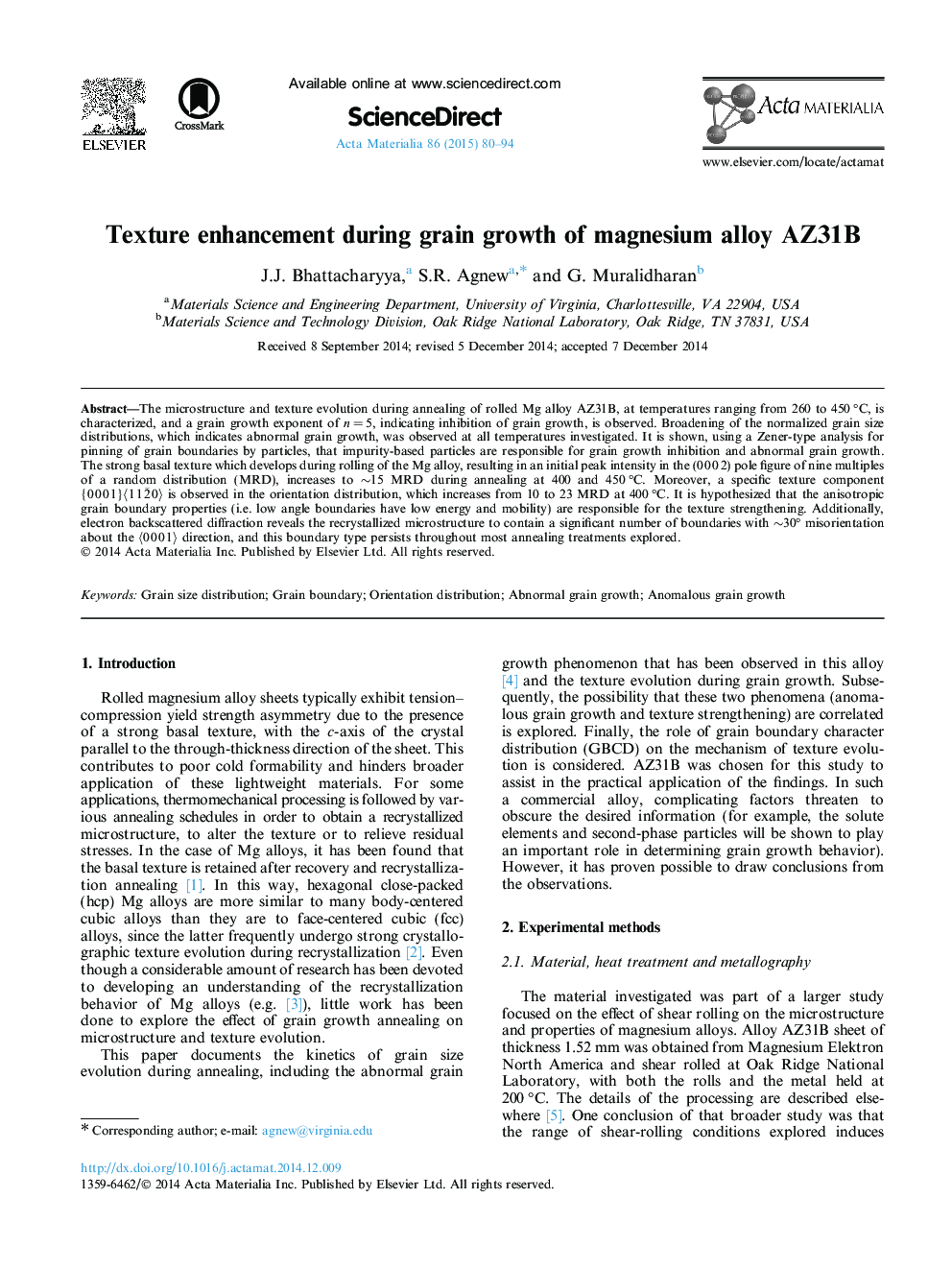| Article ID | Journal | Published Year | Pages | File Type |
|---|---|---|---|---|
| 7880658 | Acta Materialia | 2015 | 15 Pages |
Abstract
The microstructure and texture evolution during annealing of rolled Mg alloy AZ31B, at temperatures ranging from 260 to 450 °C, is characterized, and a grain growth exponent of n = 5, indicating inhibition of grain growth, is observed. Broadening of the normalized grain size distributions, which indicates abnormal grain growth, was observed at all temperatures investigated. It is shown, using a Zener-type analysis for pinning of grain boundaries by particles, that impurity-based particles are responsible for grain growth inhibition and abnormal grain growth. The strong basal texture which develops during rolling of the Mg alloy, resulting in an initial peak intensity in the (0 0 0 2) pole figure of nine multiples of a random distribution (MRD), increases to â¼15 MRD during annealing at 400 and 450 °C. Moreover, a specific texture component {0 0 0 1}ã112¯0ã is observed in the orientation distribution, which increases from 10 to 23 MRD at 400 °C. It is hypothesized that the anisotropic grain boundary properties (i.e. low angle boundaries have low energy and mobility) are responsible for the texture strengthening. Additionally, electron backscattered diffraction reveals the recrystallized microstructure to contain a significant number of boundaries with â¼30° misorientation about the ã0 0 0 1ã direction, and this boundary type persists throughout most annealing treatments explored.
Related Topics
Physical Sciences and Engineering
Materials Science
Ceramics and Composites
Authors
J.J. Bhattacharyya, S.R. Agnew, G. Muralidharan,
